Few countries are quite so thoroughly beautiful and charming as Scotland is, which is why TravelMag polled over 300 travel professionals to discover what they think the best town in Scotland is. We heard from writers, photographers and selected members of the tourism industry with a love for all things Scottish, in naming their three favourite towns in Scotland.
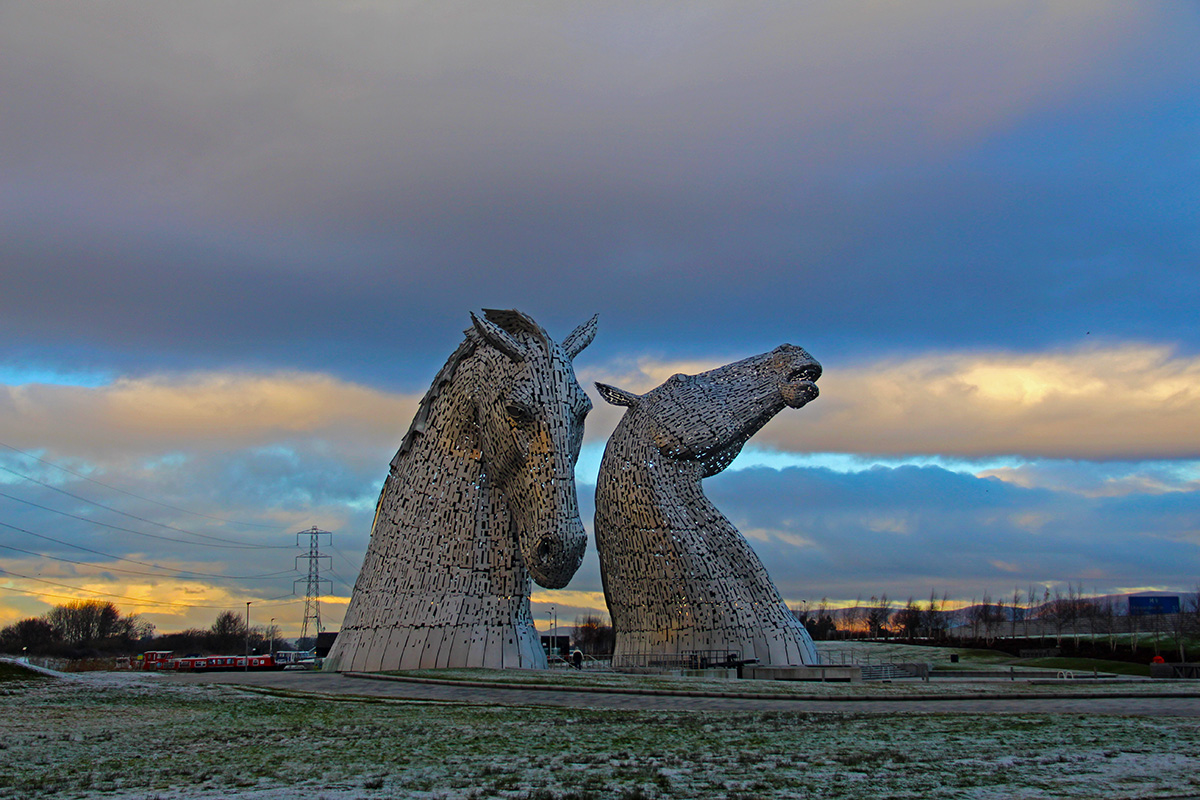
The Kelpies outside Falkirk (Photo: Paul Stafford)
At TravelMag we have a soft spot for Scotland. The country’s stunning diversity of natural vistas compete for attention with commanding cities and quaint towns everywhere between the Mull of Galloway in the south and the Shetland Islands in the north. It is a truly beautiful country, and that got us wondering what people who know it well consider to be the pinnacles of the Scottish urban experience.
Naturally cities spring to mind immediately. The artistic grace of historic Edinburgh, or the sincerity and forthrightness of Glasgow; the Highland capital of Inverness and the granite black goldmine of Aberdeen; these are all excellent choices to explore for a couple of days. But they’re the low-hanging fruit of the Caledonian experience. Gateways, and ornate ones at that, but gateways none-the-less, to a much more authentic and personal experience of Scotland. Therefore, this list aims to examine what the best small towns in Scotland to visit are.
The charm of Scotland comes predominantly from the people, and it is generally accepted that the smaller the town, the stronger the sense of community. As such, it makes sense for this exercise in assisted bucket-list construction to hone in on the country’s towns. For the sake of order and sanity, we tried not to include any villages, although a couple sneak onto the list by popular demand. While we have undoubtedly missed off some corkers, below you will find the 20 charming Scottish towns that accumulated the most votes, presented from A to Z (well, technically U).
Anstruther
Not the only entrant on this list from the East Neuk of Fife, a region of coastline that has more than its fair share of quaint fishing towns, Anstruther is the place to go if you have an affinity for all things maritime. During the warmer months, boat trips out to the Isle of May bring you closer to the natural world. The region is great for bird spotting, with large colonies of puffins. Keep your eye out too for unusual shaped rocks, which are most likely lounging seals, taking a break from the water. Back in town, the Scottish Fisheries Museum raids the annals of history to reconstruct what was once the area’s primary industry before tourism took that mantle. A few fisherfolk still operate from the harbour, and the results of their catches can be sampled at Anstruther Fish Bar, one of Scotland’s most celebrated fish and chips shops.
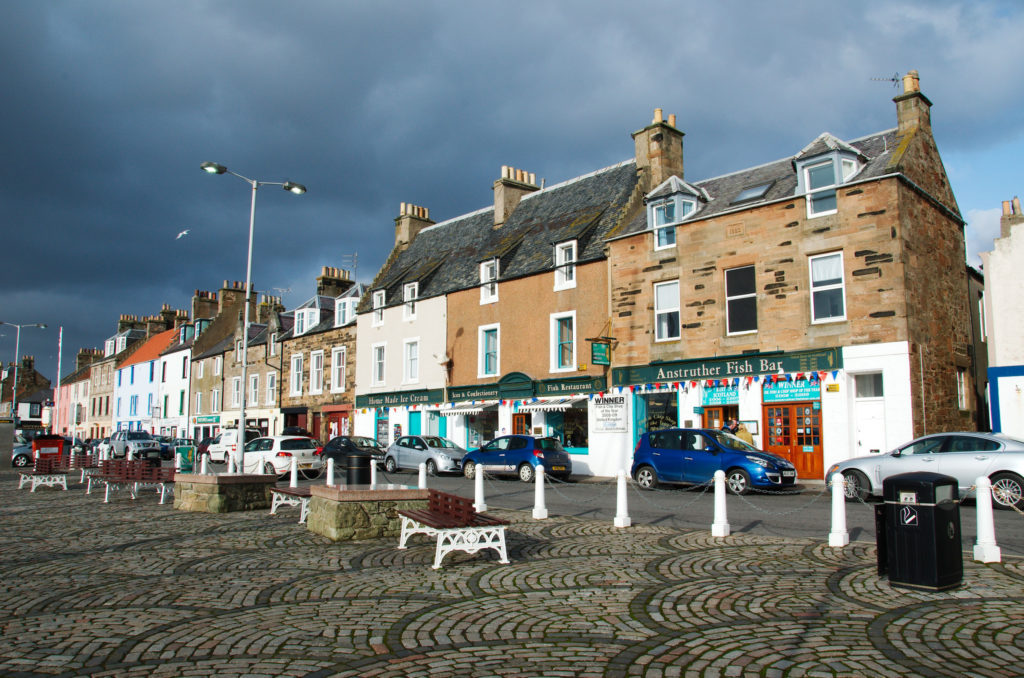
Anstruther Chip Shop (Photo: Magnus Hagdorn via Flickr)
Broughty Ferry
First gaining prominence as a defensive settlement at the mouth of the River Tay estuary in the 15th century, Broughty Castle still cuts a poised figure by the water’s edge. As the centuries passed however, wealthy citizens of Dundee, the city Broughty Ferry helped to protect, began using the quiet seaside idyll as a place to build their mansions. The production of jute in British India had made many people in Dundee, four miles away, incredibly wealthy. Both the jute industry and the need for fortification may have waned but the town retains much of the affluent charm, with boutique shopping, galleries and fine dining all available in the town centre. There is a good museum at the castle with exhibits about local history and a particularly interesting one about Dundee’s former whaling industry. There’s also a sandy beach, but it being Scotland, traditional beach activities are restricted for most of the year.
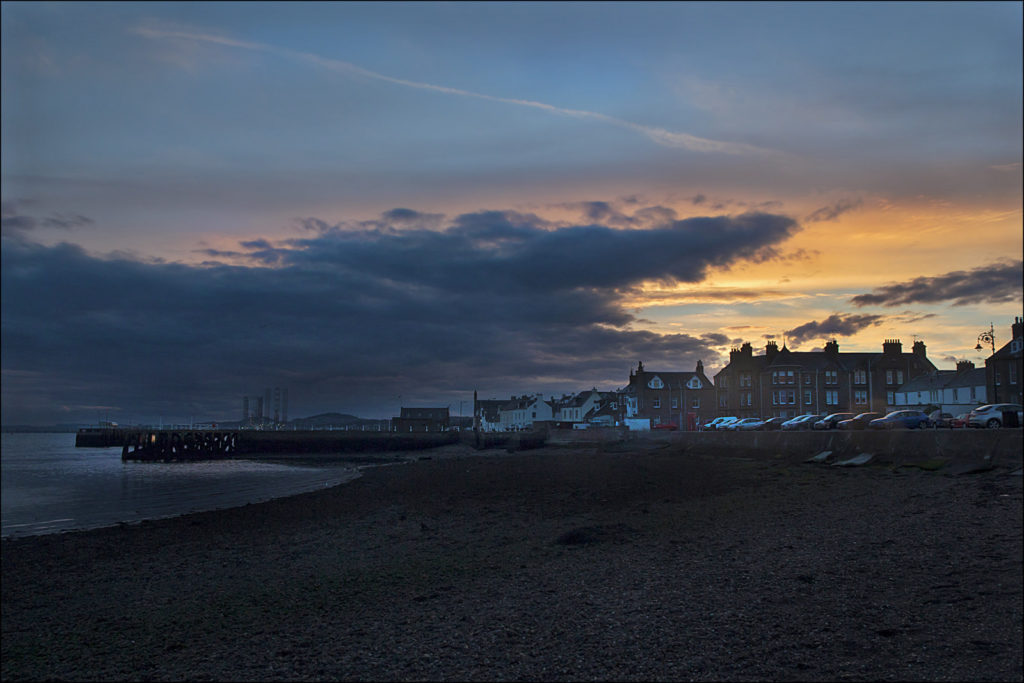
Broughty Ferry sunset (Photo: dun_deagh via Flickr)
Crieff
For over a century, Crieff has been well-established as an important tourist centre in Scotland. It acts as a gateway to the rolling hills of Perthshire and a moderate walk up to the top of Knock Hill is the best way to appreciate the surroundings. Although the great Scottish outdoors are wonderful at any time of year, and constantly changing, the autumnal show is the most enthralling. Crieff town is lovely and is dominated by independent and family-run businesses, which is always an endearing quality in more popular tourist spots. Crieff is home to one of Scotland’s most popular blended whisky brands, The Famous Grouse. Themed grouse tours take place at Glenturret distillery, which has produced single malt whiskies since an impressive 1775. The beautiful Renaissance gardens of Drummond Castle, one of the best sights in the whole region, are also just a couple of miles outside of Crieff.
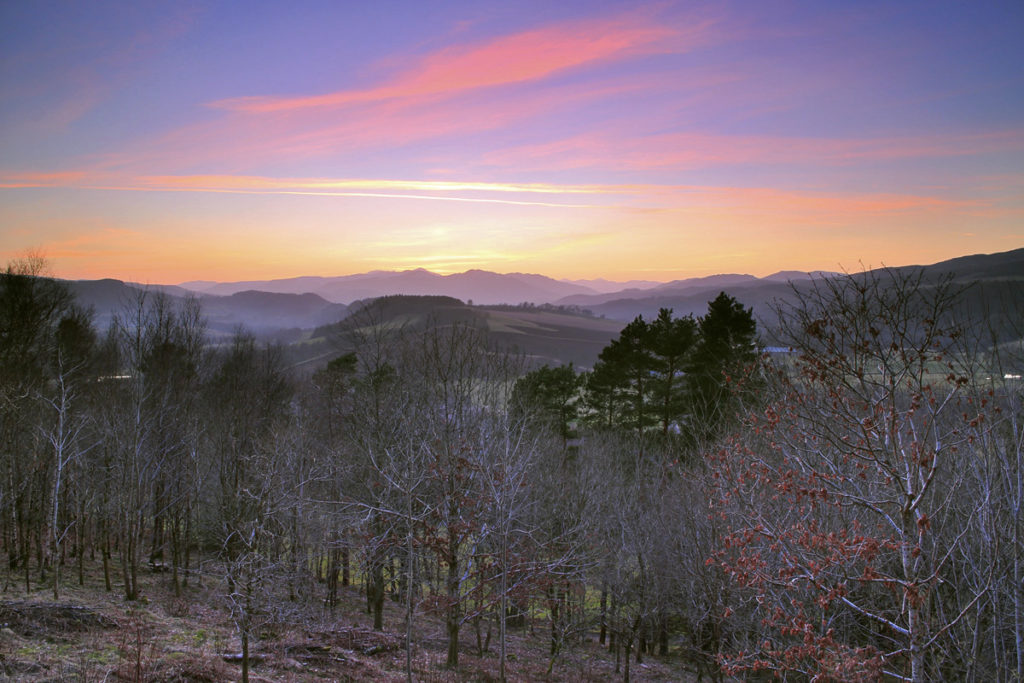
The countryside around Crieff (Photo: SwaloPhoto via Flickr)
Cromarty
Cromarty is home to one of Britain’s more unusual film festivals: Every December spaces around the small town are transformed into film venues. Even Cromarty Lighthouse becomes a canvas, as short films are projected onto the side of it. The town came to gain importance as a point along the coastal route north of Inverness. It is also strategically located at the narrow inlet of the Cromarty Firth. At certain times it is possible to see huge oil rigs that are not in service to be moored up in these sheltered waters. A walk around the quiet streets takes you past pretty waterfront cottages, painted white. Places of note include Cromarty Courthouse, which holds a small community-run museum that provides an intriguing glimpse into the working of an 18th century courtroom. Close by is Hugh Miller’s House, National Trust for Scotland-operated buildings that show a glimpse into the life of the 19th century geologist and contentious church reformer.
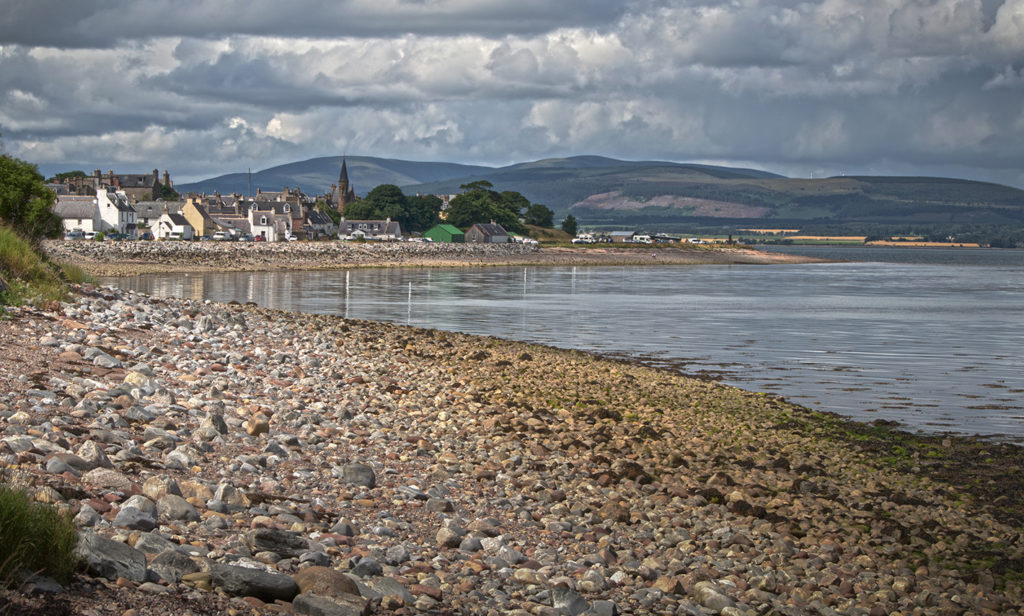
Cromarty (Photo: Gideon Chilton via Flickr)
Falkirk
As one of the bigger towns to make this list, Falkirk blends the modern and historic to showcase perfectly the past and present of Scotland. In terms of history, one of the most significant events was the Battle of Falkirk in 1298, in which William Wallace’s army was defeated by Kind Edward I of England. Although the exact battlefield location is contended, the grave of Sir John Stewart of Bonkyll, who commanded the Scots bowmen in that battle, can be found in Falkirk Trinity Church in the town centre. Callendar House is a beautiful manor house with medieval towers. Here the Antonine Wall, built by the Romans, runs through the grounds, although the tree-covered mound of earth is hardly recognisable as a man-made fortification anymore. To the north, The Kelpies are two remarkable 30-metre horse head sculptures beside the Forth and Clyde Canal. Follow this canal all the way to the west of town to reach a juxtaposition of modern and old with the Falkirk Wheel, an engineering work of art that rotates boats to lift them up to a separate canal, the Union.
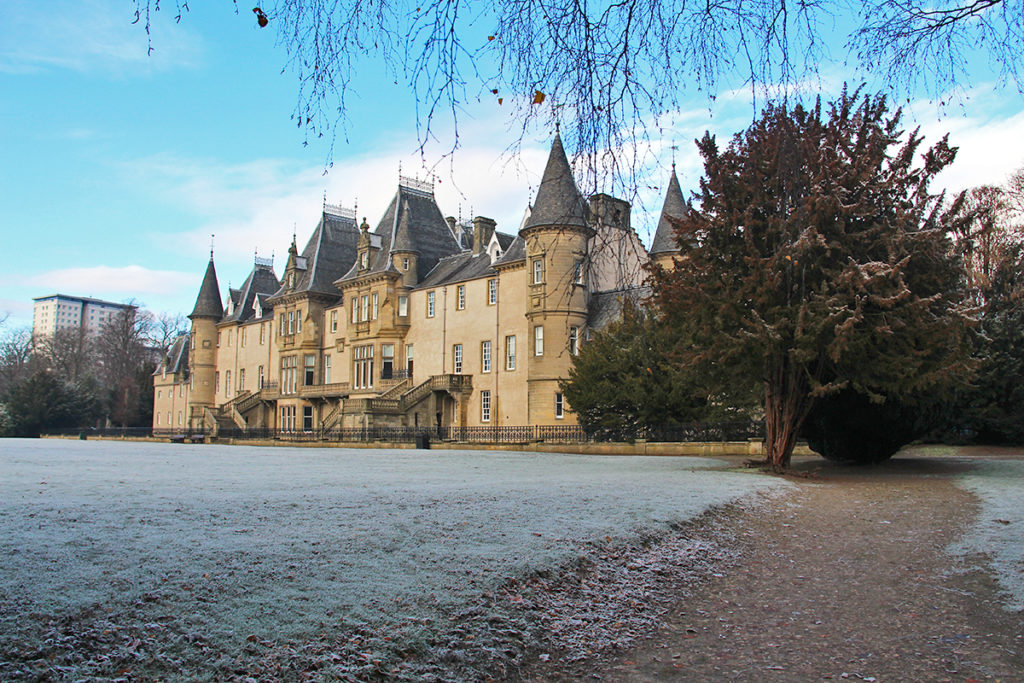
Callendar house in Falkirk (Photo: Paul Stafford)
Fort William
The Scottish Highlands are captivating and world renowned for their natural beauty, but they have fostered some lovely towns as well, Fort William being one of them. Due to its proximity to Ben Nevis (the highest mountain in Britain), Glencoe and the head of Loch Linnhe, a sea loch, Fort William has become a hub for outdoors enthusiasts of all kinds. As such, services for hikers and mountain bikers are especially prevalent in town. The West Highland Way and Great Glen Way, both popular hiking routes, have Fort William as a terminus. In town, there are plenty of great bars and restaurants overlooking the water, and the West Highland Museum tells the story of the Jacobites who tried, and ultimately failed, to take the town in 1746. There are also anthropological and natural exhibits that examine the wider West Highland region.

A steam engine arrives at Fort William station (Photo: Jacques Dufrenoy via Flickr)
Kelso
Walter Scott was the master blender of the refined whisky that is modern Scotland’s national image. Regardless of your stance on the Walter Scottification of Scotland, the man’s legacy seeps into the global perception of Scotland more often than not; so when Kelso was dubbed by Scott the “most beautiful if not the most romantic village in Scotland,” many people took notice. Kelso was where Scott attended school for a while and where his writings were first published. Now a small town, Kelso is more than its early association with Scott however. The handsome Kelso Abbey ruins date back to around the 12th century. The site was an important religious centre before falling into ruin after the Scottish Reformation. The ruins overlook the confluence of the Teviot and Tweed Rivers, the latter forming a pleasant valley of gentle countryside. Floors Castle is the seat of the Duke of Roxburghe, and the country house’s turrets give the impressive building a commanding presence. Although Floors Castle is still inhabited, parts are open to the public.
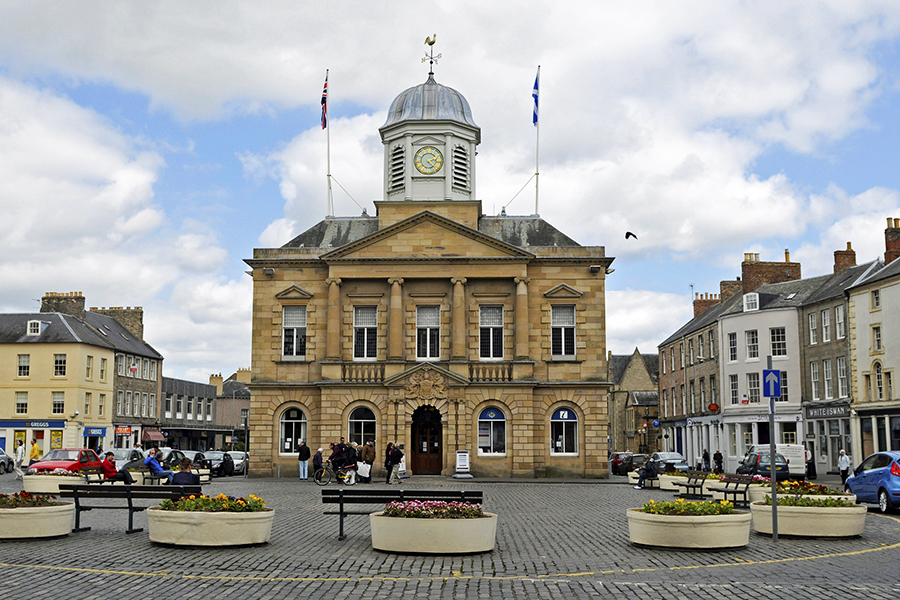
Kelso centre (Photo: Son of Groucho via Flickr)
Kirkcudbright
The first thing you should know about Kirkcudbright is how to pronounce the name. Ker-coo-bree is about right, and it is the only complicated thing about this pleasant, working harbour town. Colourful fishing boats leave Kirkcudbright’s marina of a morning and return laden with fresh catches each day, making it one of the busier fishing ports in Scotland. The town, set back from the Dumfries and Galloway coast on the estuary of the River Dee (one of many Rivers Dee in the UK), is also known for its link to the Glasgow art world roughly between 1880-1980, when a number of notable artists established themselves in town, forming the Kirkcudbright Artists’ Colony. The link has dulled somewhat today but two good galleries, Tolbooth Art Centre and Harbour Cottage Gallery remain. Among the other sights in town, MacLellan’s Castle stands out, literally, as a pleasant ruined castle that has been gradually surrounded by terraced houses over the decades.
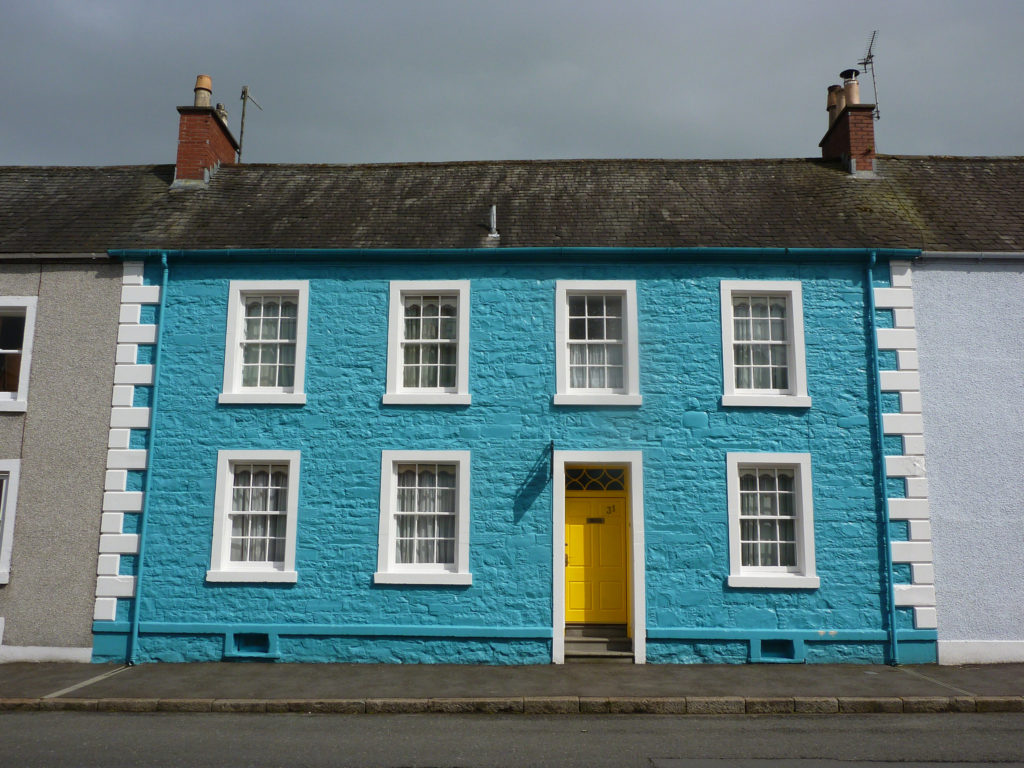
House in Kirkcudbright (Photo: Beth via Flickr)
Millport
One of the best day trips from Glasgow for families has long been the seaside Cumbrae Island town of Millport. Sprinkled along gently curving Newtown Bay this small town of 1200 people is very much the terrier of this list, as there have been moves in the last decade to seek city status. If that sounds ridiculous, the legitimacy of such a bid lies in the claim that Millport has Britain’s smallest cathedral. Most places with a cathedral have city status, the smallest officially being St. Davids in Wales, with a population of 2000. The Cathedral of the Isles, as it is called, only holds 80 people in its nave and was built relatively recently as far as cathedrals in Britain go. Various sources report different years of completion ranging between the 1850s and 1870s. For now, Millport remains a town, which is easily reached by ferry from Largs on the mainland. The centrepiece of the town is the lovely Garrison House, which has a good local museum and tearoom.

Millport’s Cathedral of the Isles in spring (Photo: Karen Brodie via Millport.org)
North Berwick
Yet another seaside town proves that you don’t need daily doses of sun to be a popular destination in Scotland. North Berwick has been voted one of the best towns in Scotland for a number of reasons. While its proximity to Edinburgh helps drive conventional tourism, the town is flanked by separate golf courses too. North Berwick’s location, where the Firth of Forth empties into the North Sea, is particularly welcoming to bird life, which in turn draws avid nature lovers to the region; some way offshore to the east of town, Bass rock holds one of the largest gannet colonies in the world. Back in town, at the tip of a natural promontory, is the Scottish Seabird Centre. Taking a boat trip out to the islands is a popular activity, as is ambling along the seafront past the pretty Edwardian houses before getting some good local fish and chips.
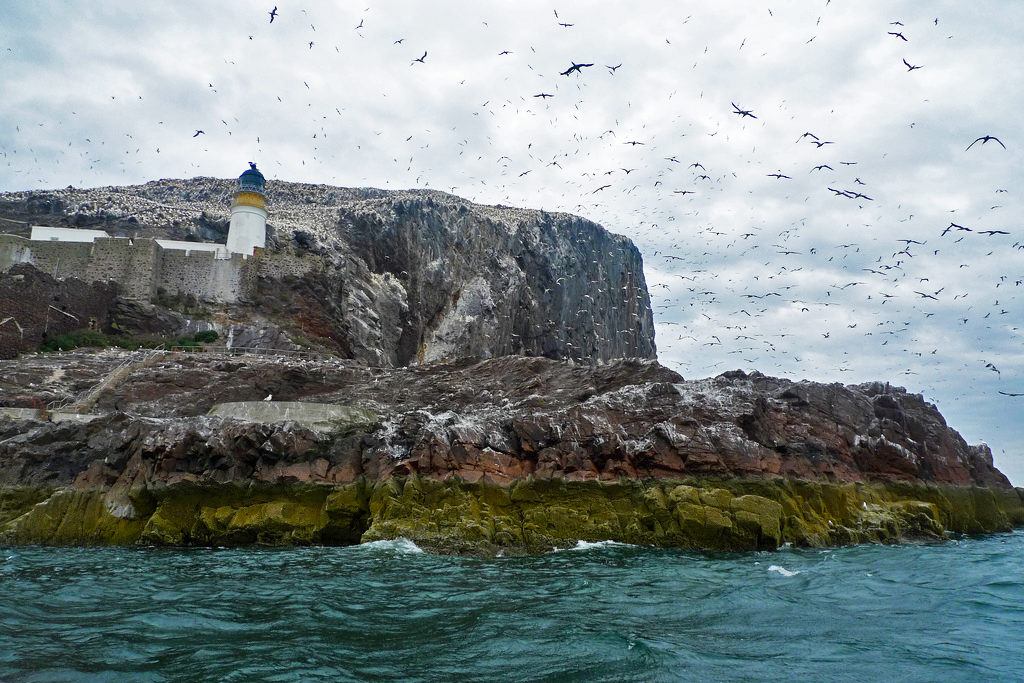
Bass Rock near North Berwick (Photo: go elsewhere… via Flickr)
Oban
Oban styles itself as the seafood capital of Scotland, but you don’t need to eat fish to appreciate this wonderful west coast town. One of Scotland’s main ferry ports (and gateway to both the Inner and Outer Hebrides), Oban’s population can triple during the main holiday season. Around town there are opportunities for sea kayaking, hiking and cycling. The town itself is not too old, despite, like many parts of Scotland, there being evidence of human habitation in the region dating back to the Bronze Age. In fact, Oban’s growth was thanks to whisky; Oban Distillery was established in 1794 and has a visitors’ centre open to the public. For good views over the water, walk up to McCaig’s Tower, a prominent feature that dominates Oban and looks somewhat like an unfinished colosseum. It was in fact the passion project of John Stuart McCaig, a local philanthropist who wanted to keep local stonemasons in work during the winter while leaving behind a family legacy.
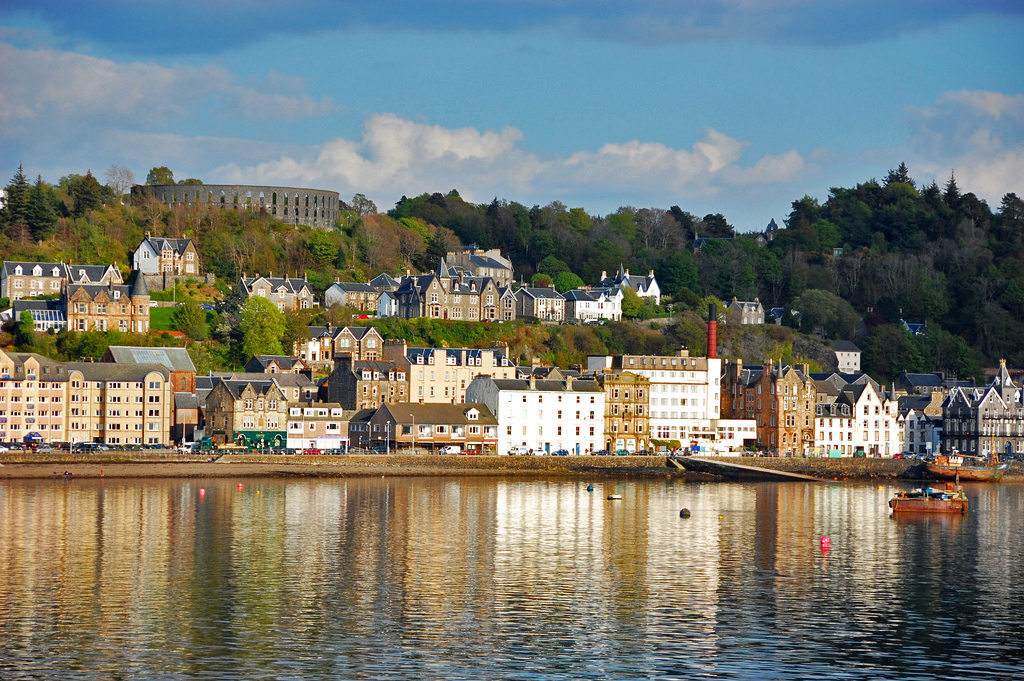
Oban from the water (Photo: Stephen Archer via Flickr)
Pitlochry
Perthshire’s northern frontier borders the Highlands, with Pitlochry offering one of the best bases from which to explore the nearby mountains. It is a good starting point for hiking both Ben Vrackie and Schiehallion. The occasional glimpses of Scottish Baronial architecture from the Victorian era can still be seen in town. Queen Victoria was believed to be a fan of the town and through the decades many others have followed suit; coming for the various castles, distilleries and natural sights that dot the fringes of town. Cairngorms National Park is just a few miles to the north and the range of sports and activities in the local area, which include bungee jumping and white-water rafting, means that many people visit Pitlochry with many a purpose.
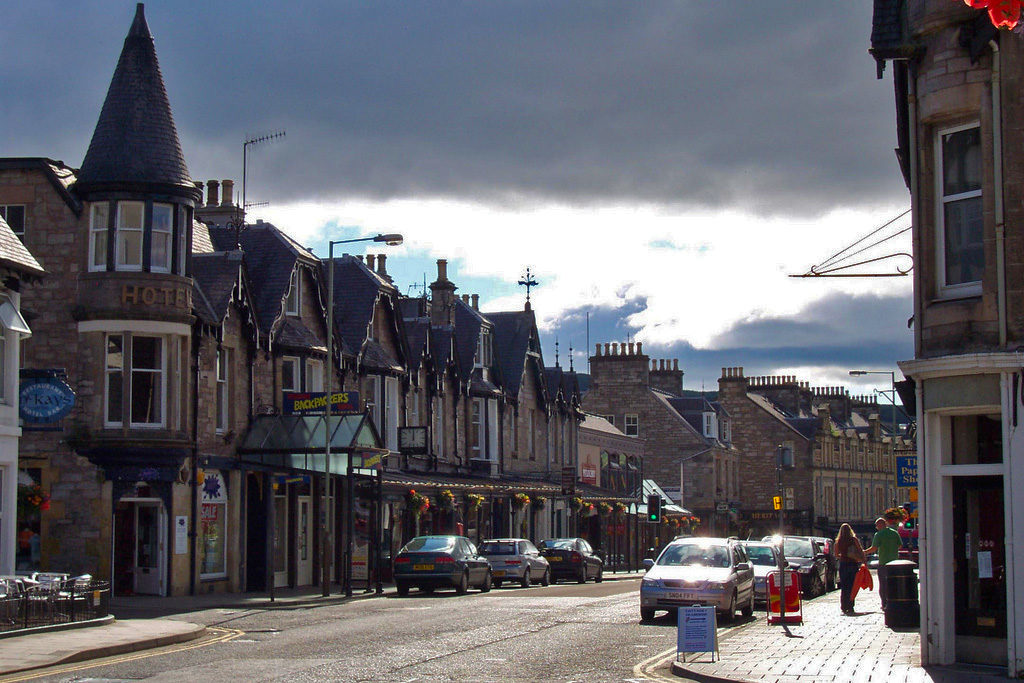
The main street in Pitlochry (Photo: Paula Funnell via Flickr)
Pittenweem
For many who have visited the East Neuk of Fife, a region of coast on the north side of the Firth of Forth, Pittenweem, even more than Anstruther, embodies the quaint fishing village vibe more than any other. It is important to note here that inhabitants of each East Neuk town will of course argue this statement and all will have a good point. In Pittenweem however, unlike some of the other ports, fishing is still commonplace, with a fish market each morning, and shoals of colourful fishing boats moored in the protective harbour. Many of the shops are still locally-run and there are sites in town dating back to the 8th century, including the hermit cave of an aging St Fillan, an Irish missionary who left relics of his work all over Scotland.
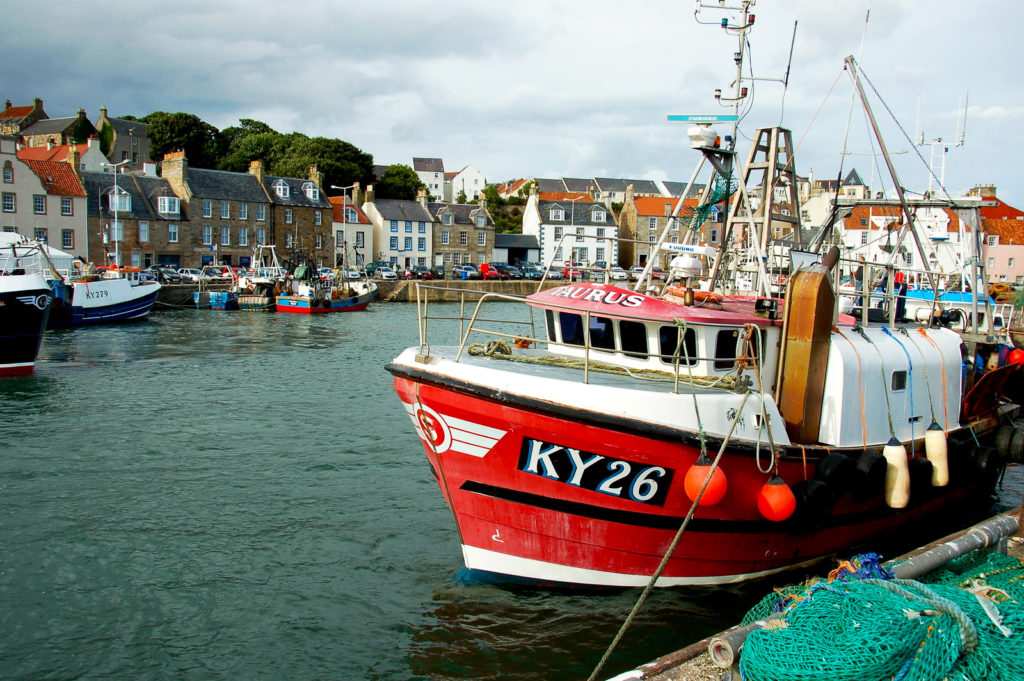
Pittenweem Harbour (Photo: James Stringer via Flickr)
Plockton
Around Plockton, the landscape rears up out of Loch Carron in whorls of rock and forest. The land changes colour according to the season and yet the village (one of only two that make this list) is spared the onslaught of the prevailing winds that shape the Highlands in these parts. Sailing boats bob on the waves, at the same time delicate and robust. Plockton announces itself in the form of a row of pretty, painted cottages that do not betray the hardship visited upon the village’s residents in many guises; potato famine, Highland clearances and the boom and rapid bust of local herring fishing have all had their impact. It is tourism that has really buoyed Plockton however, with seal watching trips and pleasant gardens being particularly popular enticements.
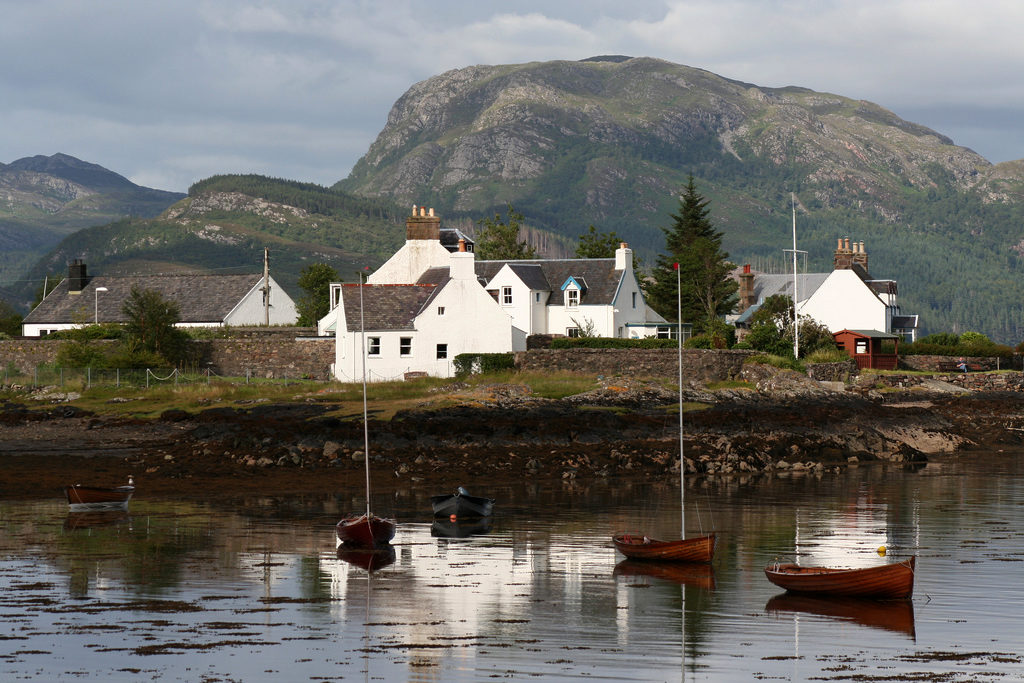
Plockton (Photo: Alexandre Dulaunoy via Flickr)
Portree
Considered the capital of Skye, the island beloved by many a tourist, Portree is a pleasant town built by a sheltered sea inlet. The photogenic row of houses lining the edge of a large rocky protrusion known affectionately as The Lump, are perhaps one of the more popular features of the town. For others, Portree is simply a good place to rest and refuel before pressing on to wilder and more rugged quarters of Skye. Although the town’s population barely peaks above 4000, there are lots of good hotels and practically every other house is a Bed & Breakfast. A good range of shops and cafes are complemented by the excellent tourist information office. Additionally, the Aros Centre has great cultural programmes and is worth checking to see if there are any events on during your stay.
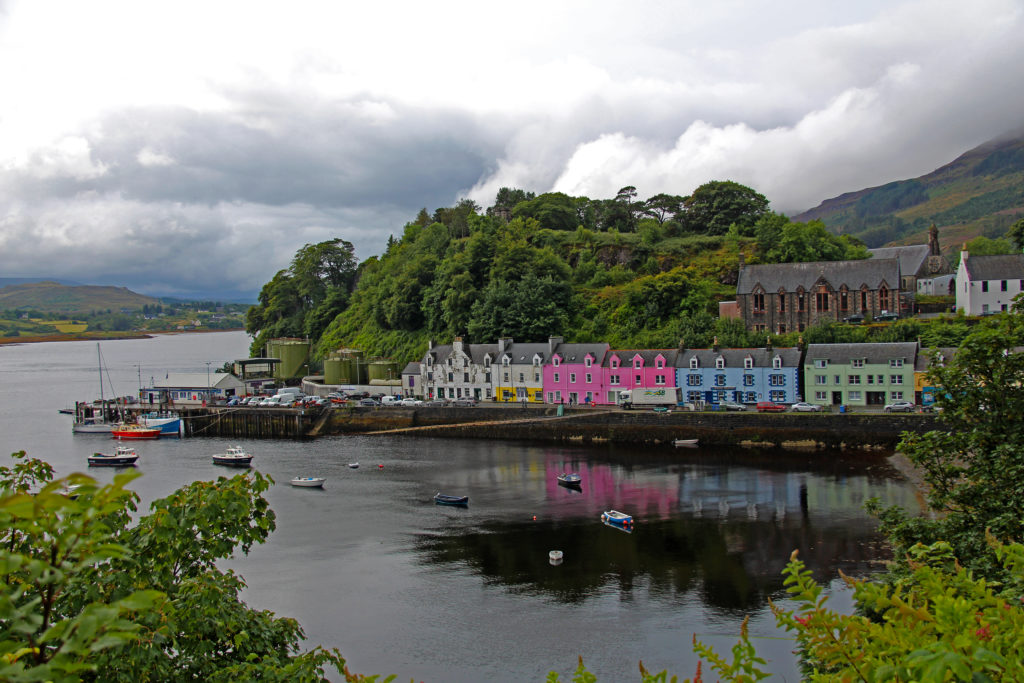
Portree (Photo: Paul Stafford)
St. Andrews
Golf is synonymous with St. Andrews and many people will insist that the globally popular 18-hole game was invented right here in Fife. Like most sports, there were most likely antecedents in many reaches of the globe, but the global consensus suggests that the modern game emanates from St. Andrews and The Open Championship is frequently held at the Old Course, which dates to 1552. But St. Andrews is not all clubs and balls. The town’s University is one of the best in Britain and students account for at least one in three residents of a town whose history stretches back much more than a millennium. St. Andrews Castle, now little more than a ruin with a sea view, was built in the 12th century. There are medieval streets and museums aplenty to keep anybody up and about on their feet, golf club in hard or not.
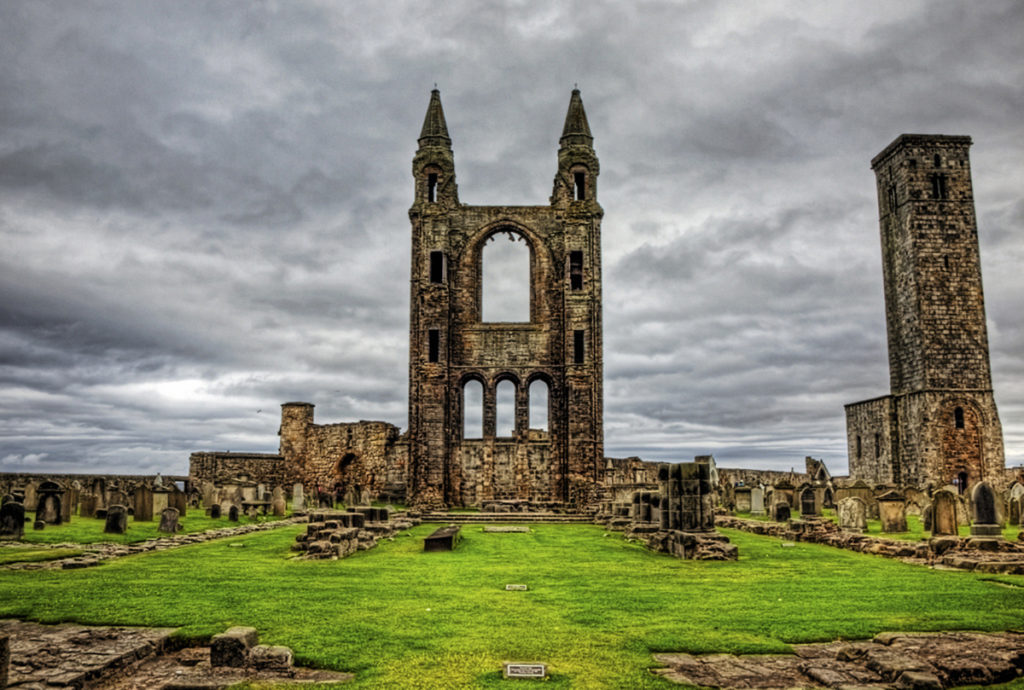
St. Andrews Cathedral (Photo: Neil Howard via Flickr)
Stornoway
While most of the towns on this list are located on the mainland, Stornoway is a little trickier to reach. The Outer Hebridean town is the main urban centre of Lewis & Harris and home to the popular Lews Castle that was built in the mid-19th century for James Matheson with money he made during the opium trade in China. Matheson also owned the entire island and came back to settle during his later life. There is also a museum outlining the island’s history and providing an exhibition that explores the community’s relationship with both land and sea. Every year in July the town hosts one of the best Celtic music festivals in Scotland. The town has some excellent pubs and restaurants on and around the harbour front, as well as shops selling the famous Harris tweed, which is handmade on the island, and then adapted to various items of clothing and upholstery.
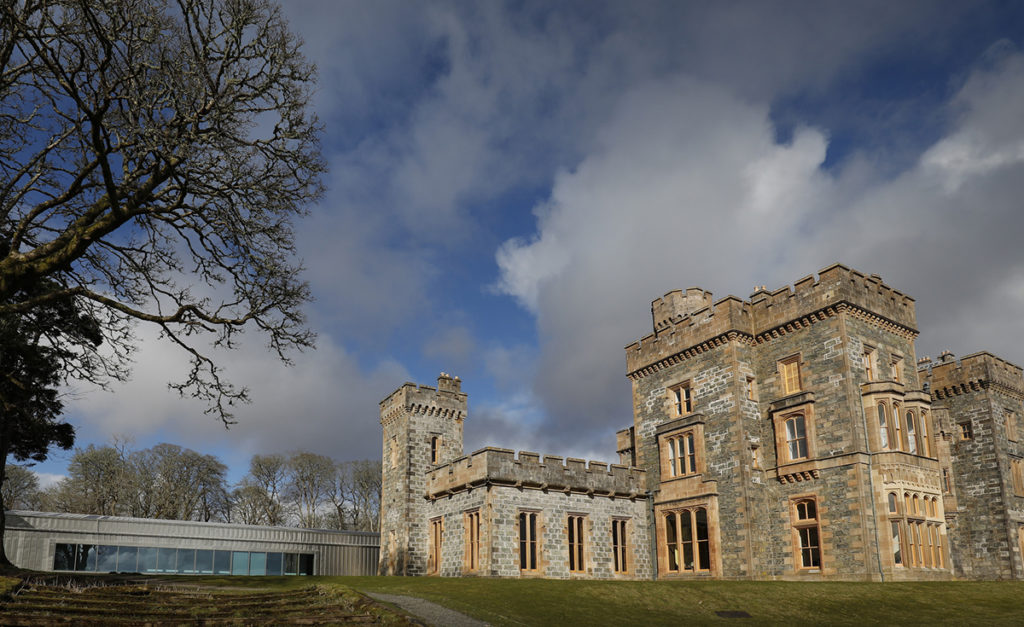
Lews Castle in Stornoway (Photo: First Minister of Scotland via Flickr)
Stromness
Perhaps the most remote town on our list of the best towns in Scotland, Stromness may not be the Orcadian capital, but it is the most popular. Some say that if arriving by ferry in the Bay of Hamnavoe, Stromness looks much like it would have done a few hundred years ago. Once upon a time it was the last port of call for trans-Atlantic sea voyages. On terra firma, the town is a joy to explore, with winding, enclosed streets lined with shops and hotels. Stromness Museum’s collection suggests as close an affinity with Iceland and Greenland’s Inuit as there is with London, and the occasional whalebone entryway to houses provides a reminder that whales have not always been a protected species in the waters around the British Isles. Some of Scotland’s best Neolithic sites are easily reached from Stromness, including Skara Brae and the Ring of Brodgar.
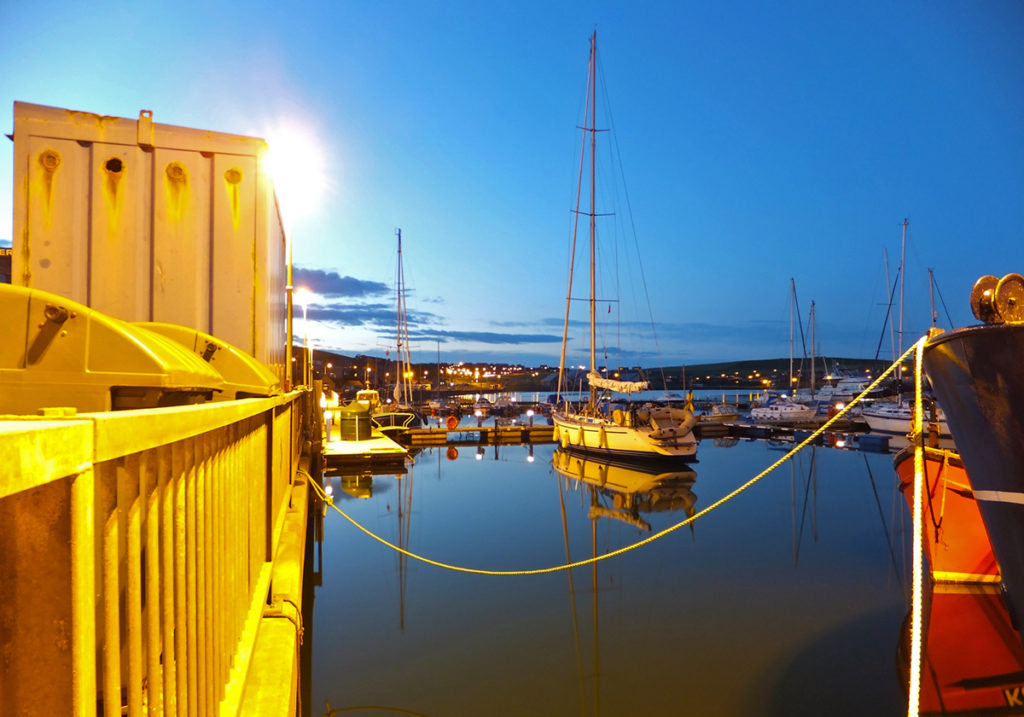
Stromness Harbour (Photo: Tash Scott via Flickr)
Tobermory
Tobermory is a small town, with a population of 1000 people. The town’s impeccably presented main road consists of buildings painted all sorts of colours from pastel green to bright sunshine yellow. When viewed from across the harbour on a calm day it is a particularly arresting sight. The capital of the Isle of Mull may even be one of the best-known towns among one to five-year old children, as it was the setting for BBC show Balamory. Despite the early indoctrination, Tobermory is well-deserving of its spot on this list. There are some good places to find fresh fish, Sgriob-ruadh Farm makes some excellent cheese and the Tobermory distillery in town has been producing whisky for more than 200 years. Many people use Tobermory as a gateway to Mull thanks to the Oban ferry link. Sea kayaking and hiking are popular activities.
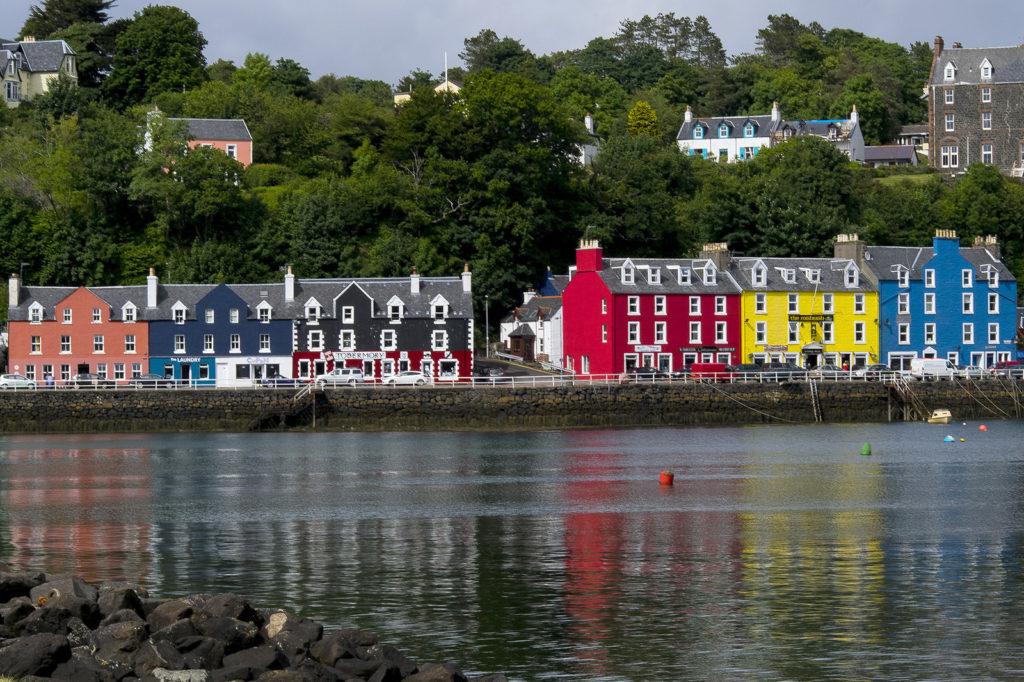
Tobermory (Photo: Vanvelthem Lionel via Flickr)
Ullapool
A population of 1500 may make Ullapool sound diminutive, but it is one of the largest settlements for miles around. Located on the shores of Loch Broom, Ullapool feels like a self-contained settlement, and is certainly a very laid-back town. It was designed by the eminent civil engineer Thomas Telford who designed bridges and aqueducts that can be found all over Scotland. Ullapool looks particularly pretty when accessed from the south by road; although the town is on relatively flat land, it is surrounded by sweeping hills that plunge right down to the loch in many places. Near the harbour you can get excellent fish and chips to eat along the waterfront. Although there is not a great deal to do in town, Ullapool Museum is housed in an old church designed by Telford and provides insight into the local area’s history and heritage.
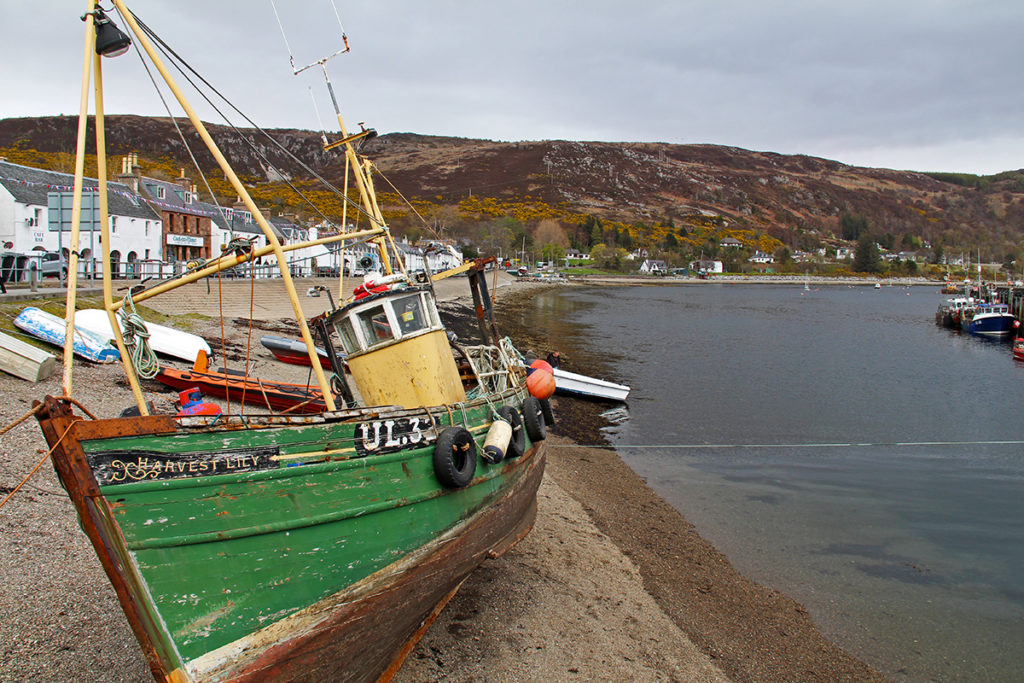
Ullapool Harbour (Photo: Paul Stafford)